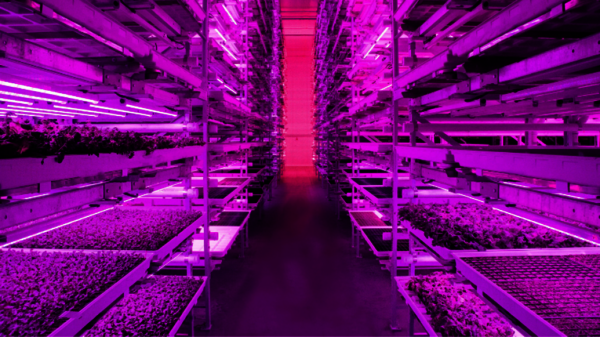Nowadays we’re all more aware of the environmental impact of the food we eat. From food miles – the sometimes huge distances our food travels before it reaches our plates – to the changing climate and the impact that has on agriculture, new solutions are needed to make farming more sustainable so we can continue to feed a growing global population.
Imagine a farm that’s growing crops, maybe lettuce, carrots, or wheat. Chances are you’re thinking of fields stretching out into the distance with rows upon rows of plants. The trouble is, fields of this size obviously can’t be located in urban centers, so the harvest will always have to be transported over long distances to get to us hungry consumers.
It’s time to think differently: vertical farming takes this horizontal idea of farming and turns it 90 degrees, growing crops in vertically stacked layers in carefully controlled conditions that optimize plant growth. Obviously, this saves a lot of space, which means crops can be grown in dense urban centers close to where they will be consumed, reducing the food miles associated with our lunchtime salad.
Taking crops inside has other benefits too, protecting the plants from an uncertain climate, reducing the need for harmful pesticides, and allowing food to be grown all year round. Yields are considerably higher than those achieved with traditional agriculture as a clever system of advanced sensors, data modeling, and artificial intelligence can help to ensure the environment is perfect for growth.
With no need for sun, soil, or acres of land, vertical farmimg is also less resource-intensive in other ways. Products used in vertical farming are for example the Indigo 500 and the GMP251.
